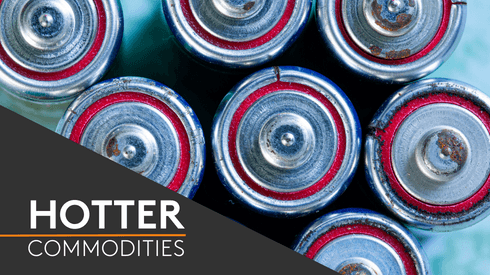Fastmarkets analyst Andrew Cole forecasts an annual average spot TC of $10.7 per tonne for 2025, which will approach $20 per tonne on a monthly average basis by the year’s end.
TC/RCs, which are discounts to exchange prices paid to smelters for processing ores into refined metal, usually fall in a tight market, and rise when supplies grow.
Fastmarkets’ calculation of its weekly copper concentrate TC/RC index, which tracks the midpoint between smelter and trader buying levels, fell into negative territory for the first time on April 26 since market track record from June 2013.
Also, market uncertainties and risks under extreme conditions, including production suspension or shutdown at smelters due to exceedingly low TC/RCs, limited support from sulfuric acid prices and difficulty in opening lines of credit, will make the market more challenging and more complicated in 2025, sources said.
More or less volumes in annual supply contracts for 2025?
Copper concentrates are the main raw materials for copper smelters, and to secure production needs, copper smelters typically book most of their copper concentrates supplies under annual supply contracts with their suppliers at a fixed number.
But, the tumble in 2025’s annual TC/RCs terms and a wide bid-offer gap have prompted copper smelters to use a more diversified and flexible way in signing annual contracts for 2025’s supplies, sources told Fastmarkets.
“Some smelters are looking for ‘less’ volumes [of copper concentrates] at a fixed number for their 2025’s annual contracts, while are asking for ‘more’ annual volumes priced against the spot index, and total supplies under long-term contracts are largely stable [from 2024’s],” a supplier source said.
“Some traders quoted their offers of TC/RCs for 2025’s supplies at low $10s [per tonne], which is not a level we can accept. It seems we’re at something of an impasse and are now discussing with one supplier about linking some supplies to the spot index, rather than a fixed number,” a buyer source said.
Fastmarkets’ calculation of the copper concentrates TC/RC implied smelters purchase, cif Asia Pacific at $8.48 per tonne/0.848 cents per lb on December 13, down from $9.28 per tonne/0.928 cents per lb a week earlier.
Multiple market participants also mentioned higher disruption risks from copper smelters globally, with copper concentrates TC/RCs running below costs threatening their production safety.
Raw material support from copper scrap and intermediate products
Amid persistent tightness in copper concentrates, Chinese copper smelters have been encouraged to use more intermediate products, including blister copper and anodes, and copper scrap for their copper production.
Chinese copper smelters increased the use of copper scrap and intermediate products during June-August following abundant supplies and decent prices of these materials, sources told Fastmarkets.
However, doubt remains among market participants over production support for copper smelters in 2025 due to market uncertainties over supply increase of copper scrap and intermediate products, sources told Fastmarkets.
“The [Chinese] government has encouraged more use of secondary materials, but it’s not that easy. Taking copper scrap for example, its supply is very sensitive to copper prices, with supplies growing when copper prices rise and falling and even disappearing when copper prices are not good,” a Ningbo-based copper scrap trader said.
Also, any potential policy change could also impact market sentiment, with fears of tariff hikes between China and the United States already keeping many Chinese importers away from US-origin scrap imports, sources said.
“People will watch closely the tariff hikes following the inauguration of US President-elect Donald Trump in January 2025, with many having already stopped importing copper scrap from the US, [and] no one wants to take the risk in the short term,” the Ningbo-based trader said.
The US, a major source of high purity copper scrap globally, is the biggest supplier of copper scrap to China, which imported a total of 361,099 tonnes of copper scrap from the US during January-October 2024, according to Chinese customs data.
This accounted for about 19.5% of China’s total imports of 1.86 million tonnes for the first 10 months of 2024, the customs data showed.
Fastmarkets’ monthly price assessment for No1 copper material, RCu-2A,1B (candy/berry), cif China, LME/Comex discount, was 8-13 cents per lb on November 25, narrowing from 13-22 cents per lb the month before.
Fastmarkets’ corresponding monthly price assessment for No2 copper material, RCu-2B (birch/cliff), cif China, LME/Comex discount, was 21-30 cents per lb on November 25, also narrowing from 22-35 cents per lb on October 28.
In the intermediate market, the supply of blister copper is projected to remain tight in a well sought-after market due to fierce competition in copper concentrates and copper scrap markets, sources said.
“I don’t expect a big increase in blister supply in 2025 following some delays of new project in Africa, and also, healthy demand from copper smelters will intensify market competition as well,” a blister copper trader said.
The negotiations for 2025 blister copper annual supply were still ongoing at the time of writing, with the number expected to be lower than 2024’s level of $116 per tonne between China Nonferrous Metal Mining and Jiangxi Copper.
Fastmarkets’ monthly price assessment for copper blister 98-99% RC spot, cif China was $100-110 per tonne on November 29, unchanged from the preceding assessment.
Blister copper, a product of primary copper smelting, usually has a lower RC amid tight supplies, which is similar to copper concentrate market, and can be used to replace copper scrap.
Profits from by-product sales and recovered metals to matter more
In the face of fierce competition in raw material markets and gloomy demand for refined copper, copper smelters will become more sensitive and vulnerable to profitability of by-products, like sulfuric acid and recovered metals, including gold, silver and other minor metals, sources said.
Sulfuric acid, a byproduct of the copper smelting process, is a main income source for copper smelters and strong sulfuric acid prices for much of 2024 helped provide some breathing room for Chinese copper smelters while spot copper concentrates TC/RCs collapsed.
It remains unknown whether the sulfuric acid market will remain a supporter in 2025, however.
“Prices of domestic sulfuric acid were good for most of this year, with the most recent price in northeast China reaching up to 600 yuan ($82) per tonne, topping other regions, and export prices were also higher on a yearly basis, providing some buffer for the tumble in copper concentrates TC/RCs,” one smelter source said.
China exported 1.91 million tonnes of sulfuric acid during the first 10 months of 2024, up by 1.32% from 1.88 million tonnes a year ago, with the export price averaging at $28.2 per tonne, up by 61.16% from $17.5 the year before, according to China’s customs data.
One copper concentrate trader source said, “High sulfuric acid prices this year helped offset some losses from the tumble in spot TC/RCs, but there will remain pressure [on copper smelters] if sulfuric acid prices stay low or fall below production cost, especially because they have already been exposed to very low TC/RCs, on both a contractual and spot basis. If sulfuric acid prices fall below input costs, smelters are high likely to cut copper production next year.”
In addition to the fairly sturdy performance of sulfuric acid, profitability of metals recovered from copper smelting, including gold and silver, will also play a more important role for copper smelters than before, sources told Fastmarkets.
“[There were] very strong buying activities in high-content gold and silver copper, lead and zinc concentrates in mid-year, especially for smelters with higher capabilities in recovering these metals, to gain profits from the price surge [in gold and silver]. This gave them some relief from the collapse of spot copper concentrates TC/RCs,” a miner source said.
Some Chinese copper smelters bought more copper, zinc and lead concentrates containing higher levels of gold and silver in 2024, to capitalize on high profits from rising prices of these byproduct metals and tighter supplies of clean copper concentrates, Fastmarkets reported in May.
“Market competition will remain intensified next year, especially for [smelters] with higher capabilities in metal recovery [from the copper, lead and zinc smelting process], and this will provide more buffer [for them] when all smelters face low TC/RCs. But limited supplies and tougher payment terms will squeeze their profits, and market talks of China’s stricter thresholds for gold concentrates or high-content gold concentrates have also raised market concerns over importing them,” the miner source added.
Higher trading risks under extreme market conditions
Market participants have also mentioned increasingly higher trading risks stemming from extreme market conditions, including cash liquidity risks and counterparty risks, among others.
“The market is getting more and more extreme, with annual TC/RCs rates clearly set to be below costs for all smelters in the world next year, which will likely prompt them to make money from other sources like…high sulfuric acid prices and decent profits from gold, silver and other metals,” a second copper concentrate trader said.
The second copper concentrate trader added, “if one income source underperforms, smelters will be exposed to risks of production cuts, and one or more banks will reduce credit lines [to them] due to production cuts or shutdown, which in turn may lead to a lack of cash liquidity.”
Also, counterparty risks have been assessed in a more serious manner next year, sources told Fastmarkets.
“We’ve already conducted strict reviews of our buyers this year since the freefall in spot TC/RCs, to avoid any potential risks. Next year, the review will be stricter, to assess if they have issues of fulfilling contracts and other risks, like cash liquidity. I think buyers also do something similar, though it’s a seller’s market,” a third copper concentrate trader source said.
To help you navigate this complex market, Fastmarkets aim to bring you reliable and timely intelligence and analysis on copper, including both copper concentrates TC/RCs plus the implied smelter and trading buying levels. Find out more about our copper concentrates price data and news here.






